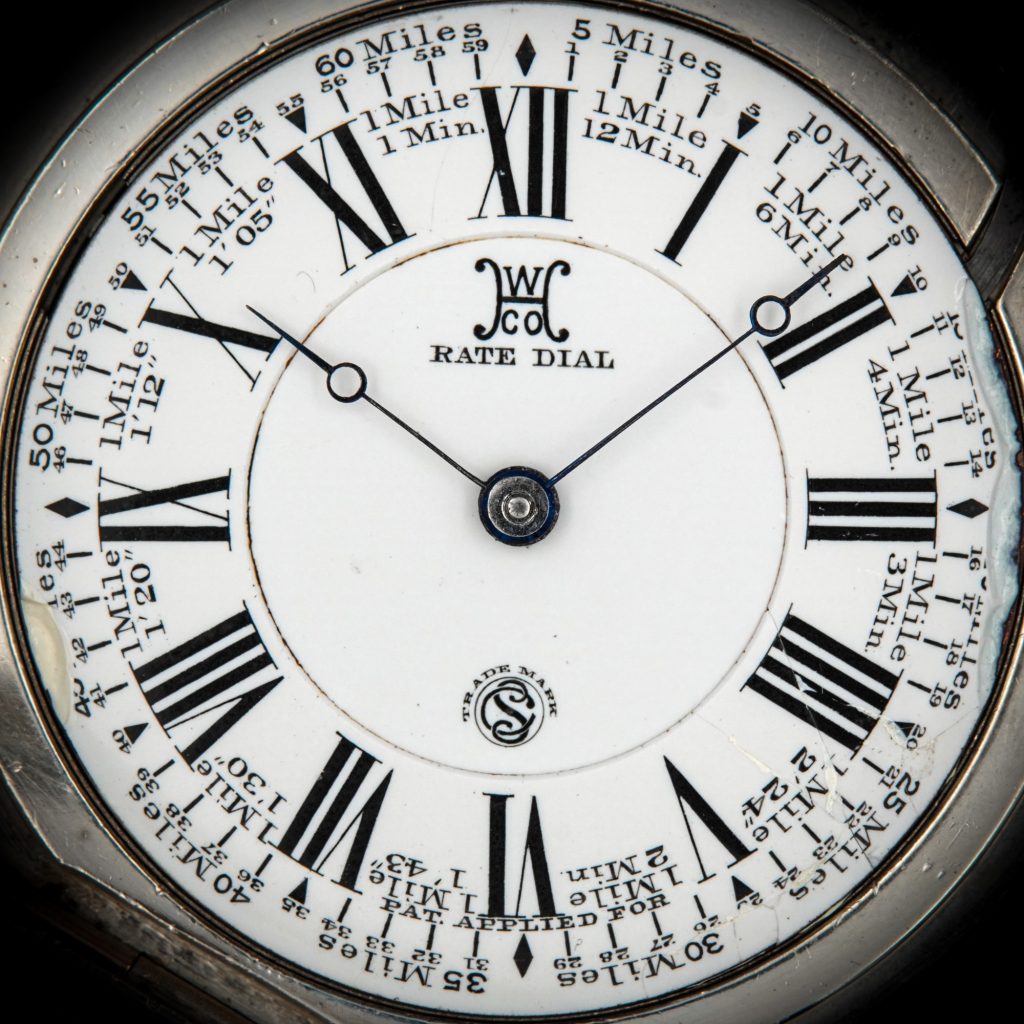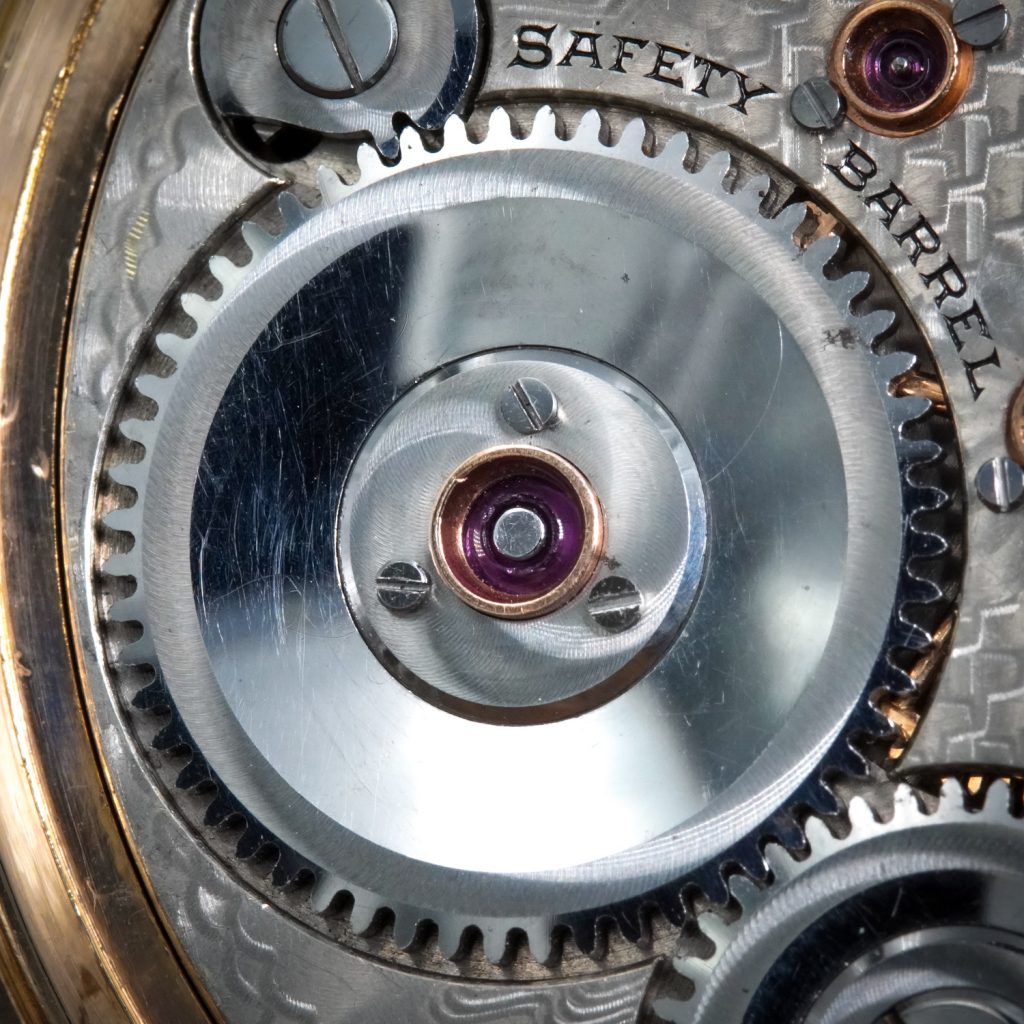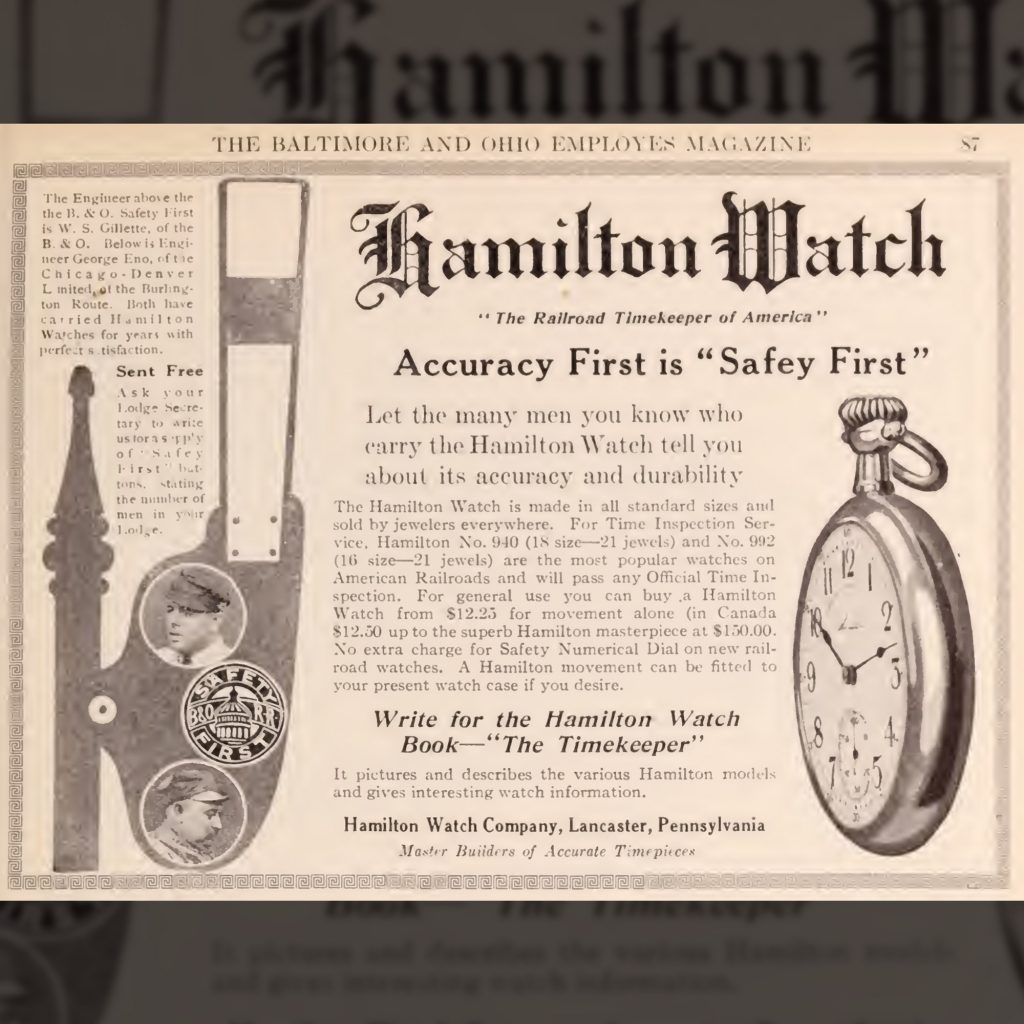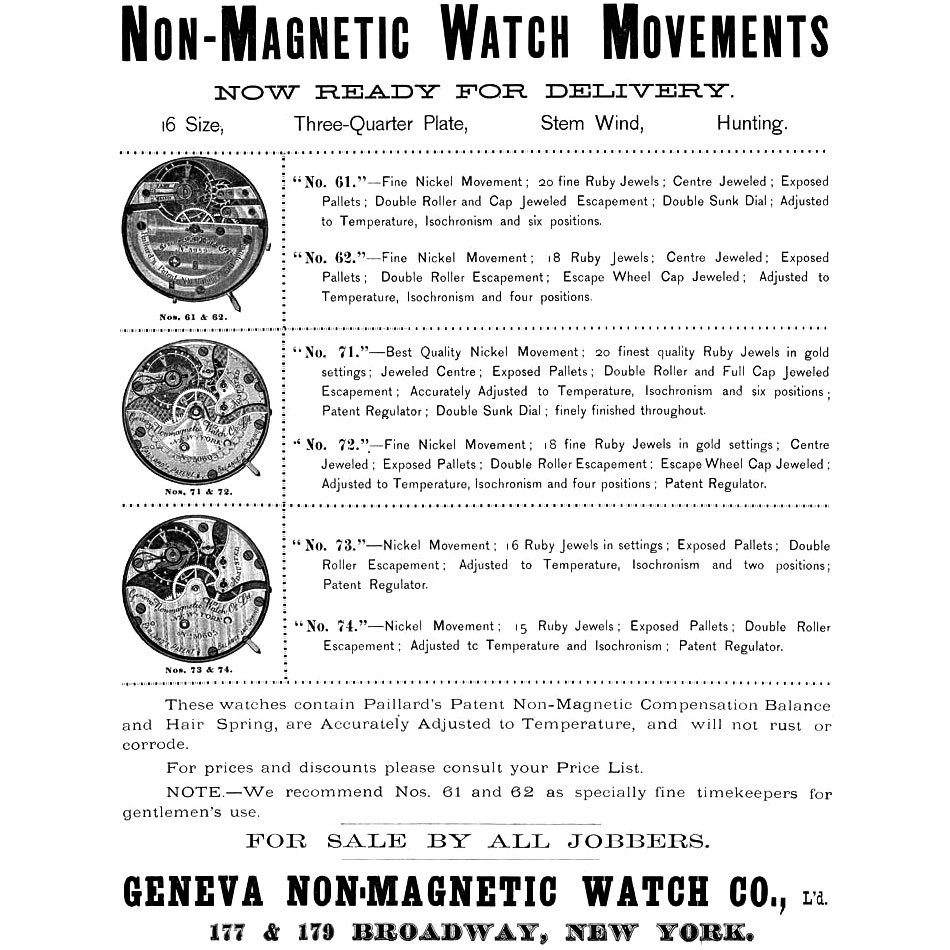Innovative Watch Dials: The “Rate Dial” Designed to Indicate Speed of Travel
New image transfer techniques at the end of the 19th century also yielded innovative and practical dial designs.

This “Rate Dial” approximates the speed of travel using the mile marker posts along the railroad track. For example, if six minutes lapses between two mile marker posts, the speed of the train is approximated at 10 miles per hour. Similarly, if only one minute passes between posts, the rate of travel is approximately 60 miles per hour.
Variations of this rare dial design have been seen fitted on Elgin and Hampden watches. While the dial indicates that a patent application was submitted, no patent was issued for the design.
The “CS” monogram trade mark has yet to be identified at this time.




I am by no means an expert, but I think the description of how this scale works might be off…
If 6 minutes passes between two posts, and this equates to roughly 10 miles per hour, wouldn’t the scale on the dial be decremented (speaking clockwise) from 60mph – 1mph, instead of 1mph – 60mph? For instance, if the train went from one marker to the next in 59 minutes, it would not be going 55-60mph, as this dial would indicate, it would be going roughly 1mph.
I think the simplest way to explain what I mean, and maybe this is what you meant and I misinterpreted it, is that the dial measures how many mile markers the train passes in the span of a single minute, and converts the markers passed into an estimate of speed (and additionally, how long a mile takes at that speed).
For example, if the train passed 33 markers in the span of a minute that would mean that it is traveling at approximately 35mph and a single mile will take approximately 1m43s to complete.
Perhaps I’m mistaken, I was just having a hard time wrapping my head around the method you describe above, and this was the only method I could find that seemed to add up. Big fan of your work, been reading through it thoroughly the last few days as I just found it.
Nick – Thanks for the comment. This rate dial can be rather confusing (and is likely why it never caught on). Markers were placed at every mile along the track. If the train passed 33 markers in the span of a minute, as in your example, the train would be traveling at 33 miles per minute, or 1,980 miles per hour. However, if you use the watch to measure the time between two mile posts, the dial can convert the time into the approximate speed. So, if we start are the first group of indicators, we can read it as, “if the train takes 12 minutes to pass the span of 1 mile, the train is going approximately 5 miles per hour.” Moving to the next group, we can read it as, “if the train takes 6 minutes to pass the span of 1 mile, the train is going approximately 10 miles per hour.” This can also operate in reverse if you know the current speed. So, if the train is traveling at a speed of 40 miles per hour, it would take approximately 1 minute and 30 seconds to travel the span of one mile. I hope that explanation helps a bit.